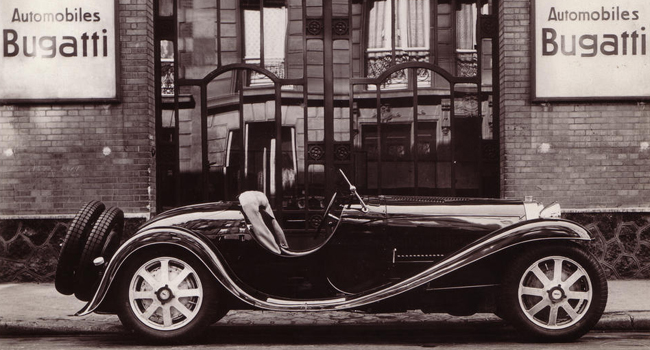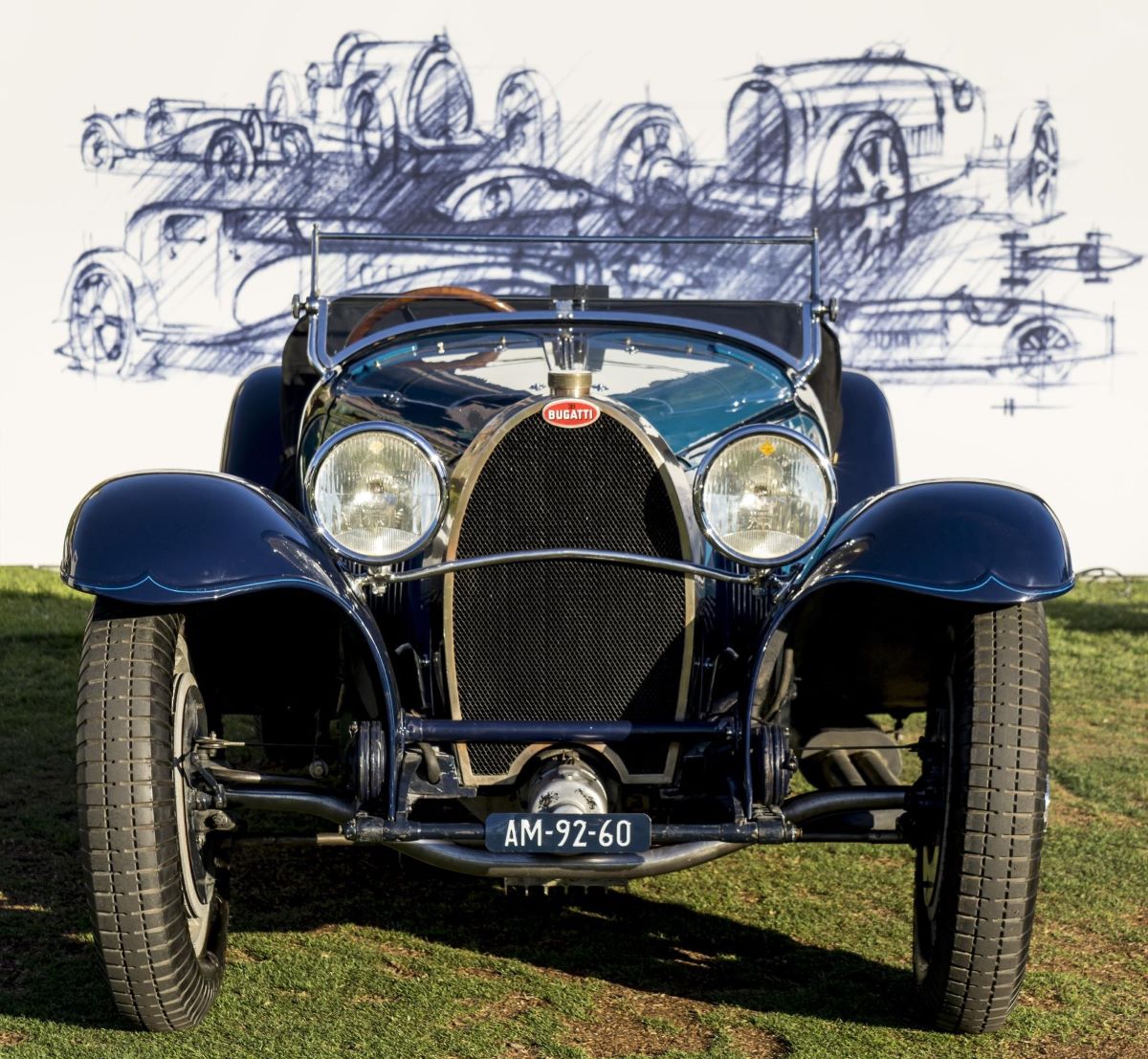
In 1931, the Type 55 replaced the Type 43 super sport tour car with a Grand Prix motor. The Type 55 Bugatti now used the 2.3 litre Grand Prix motor with a compressor from the Type 51 and the very stiff chassis of the Type 47 designed for a 16 cylinder motor. Thus it brought together different ingredients to make one of the best Bugatti vehicles. The brakes and tyres of the Type 55 were identical to those of the Type 51. The draft of the lovely two-seater roadster body offered by the factory stemmed from Jean Bugatti. Apart from the roadster also the so-called “Faux Cabriolet” was offered by the factory, a coupé whose design also came from Jean. In total 38 chassis of the Type 55 were manufactured between 1931 and 1935, 13 of them had the famous roadster body shown here. The acceleration of the Type 55 was amazing. From 0 to 100km/h in under 10 seconds. Whilst steering and road holding around bends convinced, many drivers wished for a gearbox like the Grand Prix one instead of the sluggish Type 49 gear box. In 1933, a test journalist wrote the following about the Type 55 in “Autocar”: “One doesn’t expect an engine of this type to run noiselessly. Whilst the exhaust noise of the car is noticeable but tolerable, there are a lot of mechanical noises that are caused by the gear box and the closely toothed wheels of the camshaft drive system. At high speed these individual noises turn into a wild, impressive howl. Road holding and handling are so excellent that one can zip around bends with the car. As it doesn’t swerve one feels completely safe. For a car of this type the suspension can be called comfortable…. Some experience has to be used on the gear box, the fi rst and second gear slightly “hang” at high engine speed otherwise they can be changed quickly”. More than any other Bugatti, the elegant Type 55 is a wolf in sheep’s clothing.

Type 55 Super Sport Roadster – the acceleration marvel
Bugatti will also be showcasing a Type 55 Super Sport Roadster (chassis 55208) at the Pebble Beach weekend. The Type 55 succeeded the Type 43 in 1931 as a touring car with a Grand Prix engine. Ettore Bugatti used the relatively lightweight Type 51 engine and the extremely rigid chassis from the Type 47, which was capable of holding a heavy engine. In the process, he combined the ingredients to create one of the most finely honed Bugatti chassis. The brakes and wheels on the 55 were identical to those of the Type 51. The transmission was carried over from the Type 49, but the Type 55 had a newly developed housing featuring long cantilevers mounted on the side members to further increase the rigidity of the chassis.
The acceleration of the Type 55 was impressive, taking less than ten seconds to get from 0 to 100 km/h. At 5,500 rpm its 10-cylinder engine achieved a solid 135 PS. This vehicle is still considered to be an unbeatable combination of Grand Prix racing car performance with the luxurious and comfortable driving characteristics of a touring car. A total of 38 Type 55s were built between 1932 and 1935, of which 28 are still in existence.
The displayed chassis 55208 was ordered by Parisian Bugatti agent Dominique Lamberjack in February 1932 and delivered in April of the same year. The buyer was the amateur racing driver Charles Brunet, who commissioned a “Roadster Luxe” body by coachbuilder Georges Gangloff and actively competed in races with it. The vehicle has been in the possession of the Mullin Automotive Museum in Oxnard, California since 2012.
Type 35 – the most successful racing car in automotive history
The third vehicle in the Bugatti parade is a Grand Prix racing car in its purest form: a Type 35 from 1926. With over 2,000 victories and podium positions, the Type 35 is one of the most successful racing cars in automobile history. Between the mid-1920s and 1930s, it won all the major races, including five consecutive victories in the Targa Florio, which was the toughest road race in the world at the time. In keeping with the philosophy of “Race on Sunday, sell on Monday”, company founder Ettore Bugatti sold countless Type 35s directly to wealthy customers following successful race weekends. This business idea brought commercial success for the Molsheim car maker. In its time, the Type 35 was the only car that could be driven both on the race track and on the roads.
The Type 35 is powered by a 120 PS 2.3l in-line eight-cylinder engine. Its 750 kilogrammes are distributed perfectly across the axles (50 to 50 per cent), giving the car incredible dynamics. The vehicle on display in Monterey comes from the car manufacturer’s own archive.

You must be logged in to post a comment.